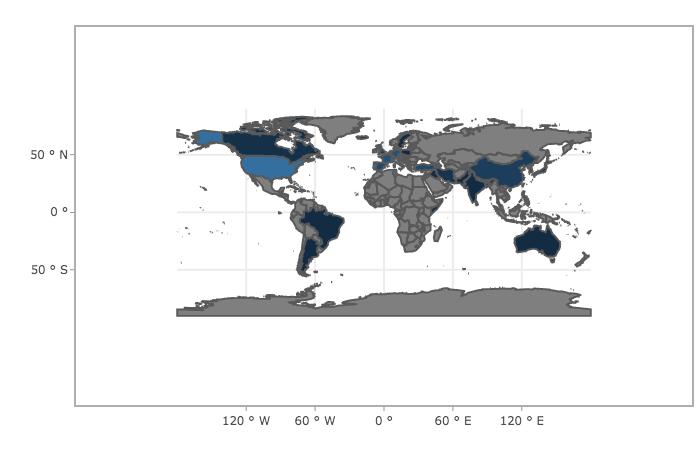
Credit: https://vicente-ramirez.shinyapps.io/COVID19_Olfactory_Dashboard/#section-home
PHILADELPHIA (October 12, 2020) – Smell loss is a frequently reported symptom of COVID-19 but reports of prevalence vary from study-to-study and range from 5% to 98%. With such a wide range of estimates, it is difficult to prioritize its importance for testing and treatment.
Investigators, led by the Monell Chemical Senses Center, determined in part why the reports vary so much. They reviewed existing research to determine whether the studies that used direct measures versus self-report of smell loss could explain the range of estimates. They found that with direct measures, about 77% of COVID-19 patients had smell loss versus only 44% with self-report.
Direct measures of smell ability involve having patients smell and report on actual odorants, whereas self-report methods include obtaining data through patient questionnaires, interviews, or electronic health records. Direct measures are objective whereas self-report are subjective measures of a person’s experience.
“Objective measures are a more sensitive method to identify smell loss related to COVID-19,” said first author Mackenzie E. Hannum, PhD, a postdoctoral fellow at Monell.
On the other hand, subjective measures, “while expedient during the early stages of the pandemic, underestimate the true prevalence of smell loss,” said Vicente A. Ramirez, a doctoral student at the University of California, Merced and Monell summer intern. Drs. Hannum and Ramirez are both investigators in the lab of senior author Danielle R. Reed, PhD, Associate Director at Monell.
Their research suggests subjective methodologies underestimate the true prevalence of loss of smell and that smell loss may be an effective screening method for early COVID-19 detection. The team published their findings in Chemical Senses, which is available as an open-access paper.
In addition, the team created a web resource that tracks the publication of COVID-19 and smell loss reports, which is updated weekly. (Please be patient when accessing the portal, the page takes a moment to load.) As of mid-October 2020, the online portal contains 118 studies of smell loss with close to 44,000, and this number grows daily.
The disparity between the reported prevalence of loss of smell in objective and subjective methods calls for further examination of the consequences of self-report. “Measuring people for smell loss may become as routine as measuring body temperature for fever” said Reed.
Coauthor Paule Joseph, PhD, a clinician at the National Institutes of Health (NIH) adds, “measurement of smell should be a part of all COVID-19 clinical exams and is a valuable screening tool.”
Researchers do not yet have a clear picture of the trajectory of COVID-19-induced smell loss; the team found varied reports among the studies they analyzed. Several studies reported significant improvements quickly after the onset of symptoms. However, other studies said that many patients still had not returned to a normal sense of smell more than two weeks after the beginning of smell loss.
###
In addition to Monell and UC, Merced, researchers from the Division of Intramural Research, National Institute of Nursing Research contributed to this research. Dr. Hannum is supported by NIH T32 funding (DC000014). Coauthor Paule Joseph is supported by the National Institute of Nursing Research (1ZIANR000035-01) and by the Office of Workforce Diversity, NIH, and the Rockefeller University Heilbrunn Nurse Scholar Award.
NOTE TO EDITORS: This open-access paper. “Objective sensory testing methods reveal a higher prevalence of olfactory loss in COVID-19-positive patients compared to subjective methods: A systematic review and meta-analysis,” is available here.
The Monell Chemical Senses Center is an independent nonprofit basic research institute based in Philadelphia, Pennsylvania. Founded in 1968, Monell’s mission is to improve health and wellbeing by advancing the scientific understanding of taste, smell, and related senses, where our discoveries lead to improving nutritional health, diagnosing and treating disease, addressing smell and taste loss, and digitizing chemosensory data.
Media Contact
Karen Kreeger
[email protected]
Original Source
https:/
Related Journal Article
http://dx.




